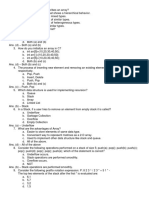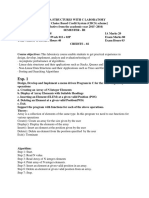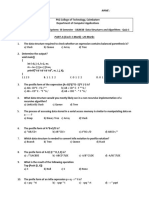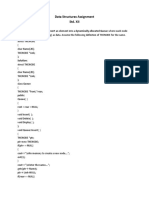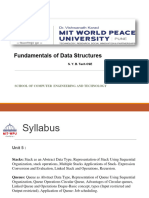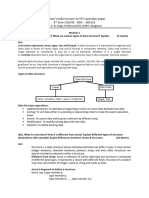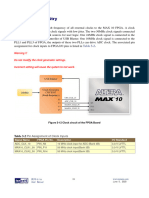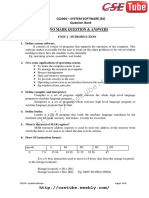0% found this document useful (0 votes)
51 views3 pagesData Structure Answers
The document provides an overview of data structures, including definitions and examples of linear and non-linear data structures, abstract data types (ADTs), and various types of data structures like primitive, static, and dynamic structures. It also includes algorithms for evaluating postfix expressions and converting infix to postfix, along with C functions for linear and binary search, and discusses recursion and applications of stacks. Additionally, it covers infix, prefix, and postfix expressions, and the validity of stack sequences.
Uploaded by
scarlettflare479Copyright
© © All Rights Reserved
We take content rights seriously. If you suspect this is your content, claim it here.
Available Formats
Download as PDF, TXT or read online on Scribd
0% found this document useful (0 votes)
51 views3 pagesData Structure Answers
The document provides an overview of data structures, including definitions and examples of linear and non-linear data structures, abstract data types (ADTs), and various types of data structures like primitive, static, and dynamic structures. It also includes algorithms for evaluating postfix expressions and converting infix to postfix, along with C functions for linear and binary search, and discusses recursion and applications of stacks. Additionally, it covers infix, prefix, and postfix expressions, and the validity of stack sequences.
Uploaded by
scarlettflare479Copyright
© © All Rights Reserved
We take content rights seriously. If you suspect this is your content, claim it here.
Available Formats
Download as PDF, TXT or read online on Scribd
/ 3











